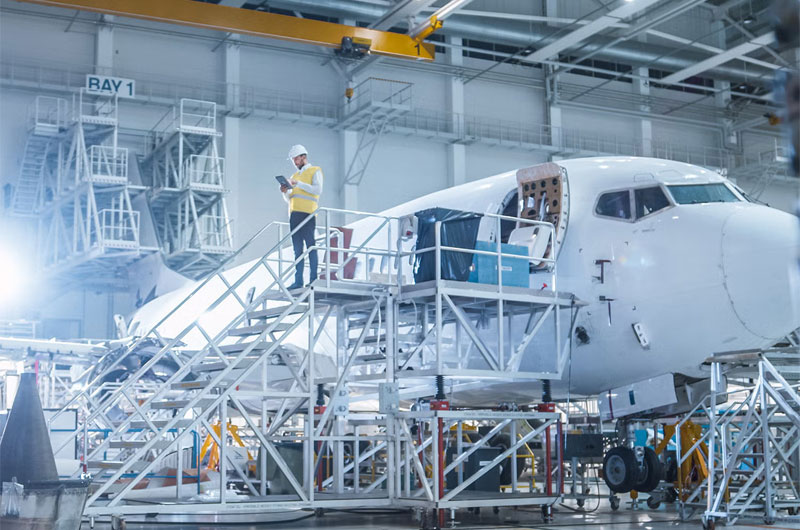In the aerospace industry, where performance and safety are paramount, every component must meet the most stringent quality and dimensional standards. Among the critical steps in manufacturing aerospace parts is high-precision cutting, especially for sheet metal components used in fuselages, engine housings, wing structures, and interior systems.
Why Precision Cutting Matters in Aerospace?
Aerospace sheet components are subject to extreme mechanical loads, temperature changes, and aerodynamic forces. Therefore, even the slightest deviation in size, shape, or finish can compromise performance or safety.
Key Reasons for High Precision:
- Tight Tolerances: Components must often meet tolerances within ±0.05 mm or tighter to ensure proper fit and function in assemblies.
- Material Integrity: Cutting processes must preserve the structural integrity of advanced alloys and composites.
- Weight Reduction: Precision allows designers to reduce excess material, contributing to fuel efficiency.
- Compliance with Standards: Aerospace cutting must comply with certifications such as AS9100, NADCAP, and ISO 9001 to ensure traceability and quality assurance.
Common Materials Used in Aerospace Sheet Components
High-precision cutting processes must handle a wide range of high-performance materials, such as:
- Aluminum Alloys (e.g., 2024, 7075): Lightweight and corrosion-resistant.
- Titanium Alloys (e.g., Ti-6Al-4V): High strength-to-weight ratio and temperature resistance.
- Stainless Steel (e.g., 17-4PH, 304, 316): Used for structural and interior components.
- Nickel Alloys (e.g., Inconel): Excellent heat and corrosion resistance.
- Composite Panels (e.g., CFRP): Lightweight and strong, but require special cutting techniques.
High-Precision Cutting Technologies
Several advanced cutting methods are employed to achieve precise dimensions and minimal material distortion:
1. Laser Cutting
- Advantages: Extremely accurate, clean edges, low kerf width.
- Materials: Ideal for aluminum, stainless steel, titanium sheets.
- Use Case: Lightweight bracketry, airframe panels, and cabin interior parts.
2. Waterjet Cutting
- Advantages: Cold cutting—no heat-affected zones, good for composites and thick metals.
- Materials: Titanium, steel, carbon fiber composites.
- Use Case: Structural components, high-strength support sheets.
3. Plasma Cutting
- Advantages: Fast and effective for thicker sheet metals.
- Limitations: Less precise than laser or waterjet; potential for heat-affected zones.
- Use Case: Larger aerospace structures not requiring tight tolerances.
4. CNC Punching and Routing
- Advantages: Effective for repeatable hole patterns and cutouts.
- Use Case: Perforated panels, mounting holes, vent covers.
Ensuring Quality in Aerospace Cutting
Achieving high-precision cutting for aerospace components involves more than just the cutting technology. It requires a comprehensive quality control system that addresses the following:
1. Dimensional Accuracy
- Parts are inspected using CMM (Coordinate Measuring Machines), laser scanners, or optical measurement tools to verify tolerance conformance.
2. Surface Finish
- Post-cut edges must be smooth, burr-free, and free of microcracks. Deburring and edge conditioning are often required.
3. Material Traceability
- Each batch of material and each part must be traceable to ensure compliance with aerospace standards.
4. Process Control
- Advanced CNC systems use CAD/CAM software to automate and optimize cutting paths with micron-level accuracy.
5. Certifications & Documentation
- Aerospace customers require full documentation, including inspection reports, process logs, and material certifications.
Benefits of High-Precision Cutting in Aerospace
Investing in high-precision cutting capabilities provides substantial benefits:
- Enhanced Safety: Accurate parts reduce risk of failure in critical systems.
- Improved Assembly Fit: Minimizes rework and ensures seamless assembly.
- Material Efficiency: Reduces waste and lowers cost per part.
- Reduced Lead Times: Advanced cutting methods and automation accelerate production.
- Regulatory Compliance: Meets industry standards and customer expectations.
Partnering with the Right Sheet Metal Fabricator
Choosing a cutting service provider with aerospace experience is crucial. Look for the following attributes:
- AS9100 or NADCAP Certification
- Proven track record with aerospace OEMs or Tier 1 suppliers
- In-house quality control labs
- Ability to work with exotic and aerospace-grade materials
- Support for prototyping and production volumes

